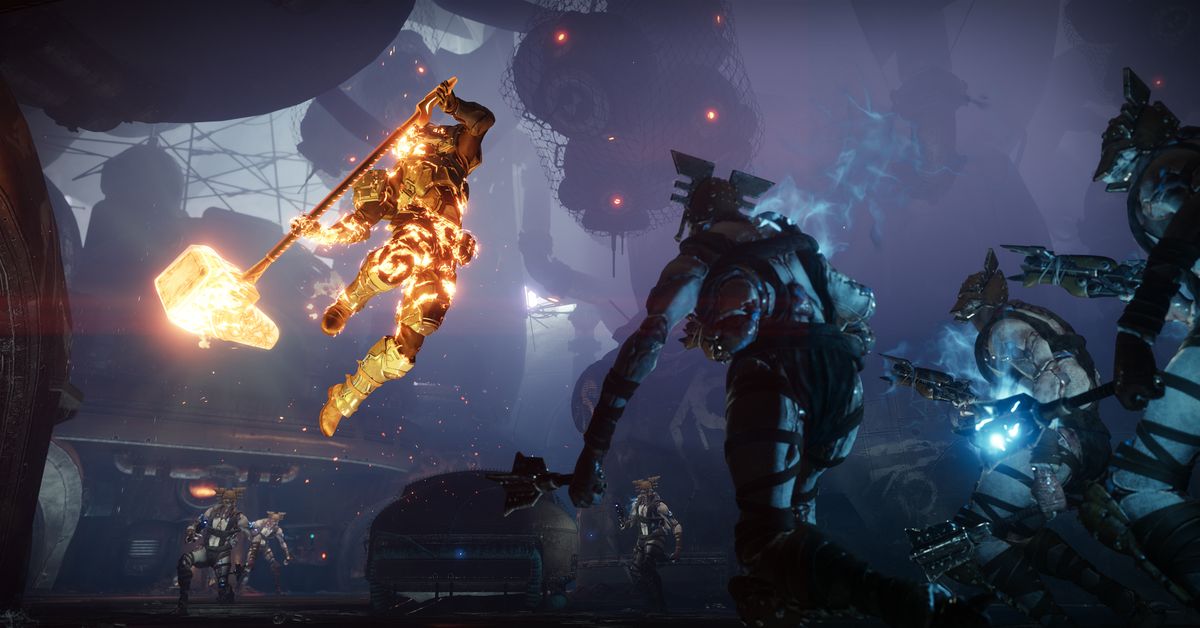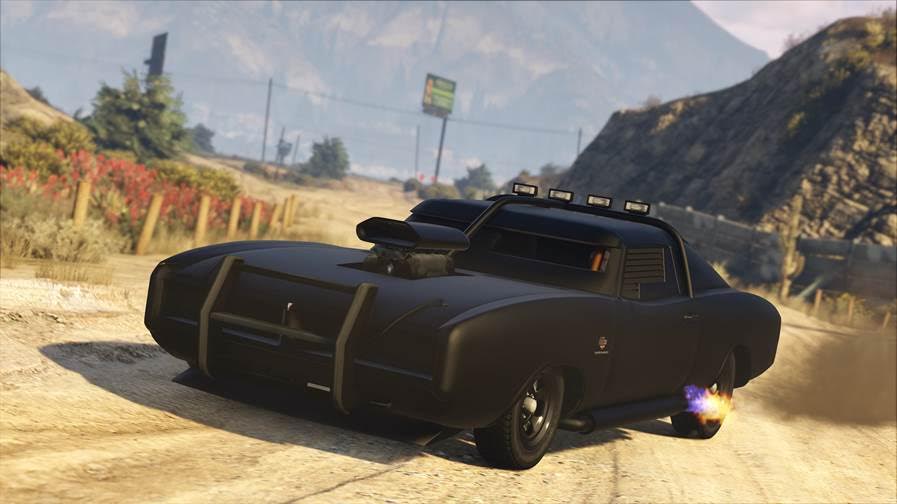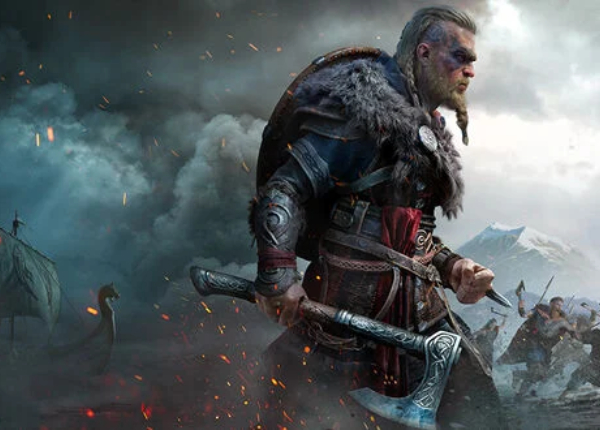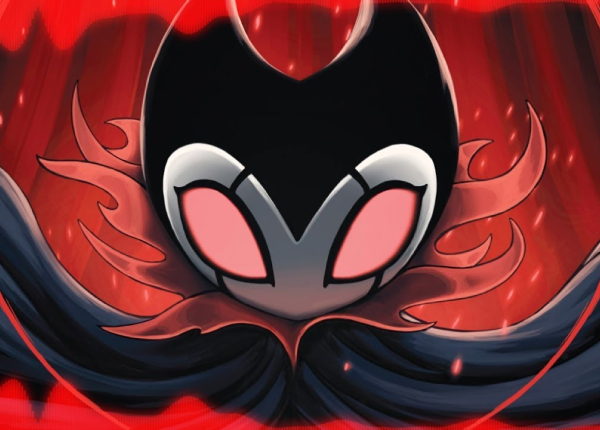Destiny 2: Forsaken review: Destiny is finally where it’s meant to be

[Ed. note: This review is now final. It begins with our initial impressions from Sept. 14, and is followed by an update with our final impressions from Sept. 28.]
A year before Forsaken, Destiny 2 was met with praise from the Destiny community as well as critics. But only a few months later, it became clear that the game was missing the enjoyable repetition that players found in the original Destiny. For the past nine months, Destiny 2 has been struggling through scandals and mediocre expansions, trying to reach this moment.
Destiny developer Bungie promised that Forsaken would fix all of Destiny 2’s problems. Instead, the studio managed to do more than I could’ve ever hoped for.
Forsaken’s improvements start at the base game, removing restrictions that Destiny 2 added to the franchise last year. The weapon system in Destiny 2 has been completely overhauled, letting players use different types of guns in different slots.
Shotguns, sniper rifles, fusion rifles and even some grenade launchers have been taken out of the heavy slot and placed into the primary or secondary slots again. This gives players more access to these weapons, and it increases how powerful players feel on a regular basis. This new weapon system is just one new example of how Bungie and co-developer High Moon Studios changed Destiny 2 for all players, not just those who dive into Forsaken.
:no_upscale()/cdn.vox-cdn.com/uploads/chorus_asset/file/13084907/D2_Forsaken_Gamescom_Gambit_06.jpg)
Bungie, High Moon Studios/Activision
Destiny is all about the interaction between a given Guardian and their foe, be that an alien being or an enemy Guardian in the Crucible or the new Gambit mode. Destiny 2 made Guardians feel slow on both ends, with lower power recharge rates and infrequent access to their most powerful and unique weapons. But the Year Two update that launched alongside Forsaken created a game that feels faster and gives players far more choice about how they want to handle each situation.
The campaign of Forsaken is the first thing players will experience when they jump into the expansion proper, and it starts with the demise of fan-favorite hero Cayde-6. The rest of the story progresses as a revenge tale, as players ride across a barren wasteland to avenge their partner’s death.
The missions are spread out this time, letting players choose which of the Barons responsible for Cayde’s death to eliminate first. Do you want to kill the sniper that took down Cayde’s ghost? Or the Hangman that slammed him through a wall? One may be more difficult than the other, depending on your current power level, but the choice is still yours.
The bosses are all interesting in their own way, even if they all devolve into a bullet sponge at some point. The Barons shout at you over comms during their missions, and each of their unique personalities and specialties come out before you ultimately take them down. It’s a new system for Destiny, and it makes the campaign feel a bit more fluid and fun — less like you’re simply being pulled in specific story directions by NPCs.
Eventually, you’ll come across the big-bad that took Cayde out. I won’t spoil anything here, but the story goes in a drastically different direction once the campaign is over, leading players to some completely new areas and introducing them to a conflict on a more galactic level.
Without the raid in place — and all the lore that will presumably come with it — the story feels a little disjointed. In some ways, it’s left me very curious to learn more about their Barons and Prince Uldren’s motivations, where those character come from and why these events transpired. But the shoot-first-ask-questions-later approach to the Baron hunts does make the narrative feel a bit shallow, at least for now.
:no_upscale()/cdn.vox-cdn.com/uploads/chorus_asset/file/13050879/Void_lock.jpg)
Bungie, High Moon Studios/Activision
The environments that the campaign introduces you to are the stars of Forsaken. The Tangled Shore — a barren asteroid filled with seedy caves and villains who are all looking to take a piece out of each other, not just you — is a dark, gorgeous space filled with Public Events and other activities for players to do together.
The area’s gloomy personality seeps into every activity, with the fantastic voice-over from the new Spider character adding to the ambience. Destiny is always at its best when you’re palling around a planet with friends, and the Tangled Shore’s enemy variety and sense of immersion help make that a bit more interesting than in other locations.
But the Dreaming City — an exclusively endgame location — is Forsaken’s greatest achievement. The space is huge, and every nook and cranny is filled with some kind of secret. Players have already discovered many of them, but some still lie in wait for the internet hive mind to dismantle.
The mysteries of the Dreaming City have been relatively minor ones so far, but it’s still exciting to log in every morning to see what people have discovered. When Destiny 2 first launched a year ago, I logged in every day and checked news to see what secrets players would discover — but the secrets never came. The Dreaming City embodies the heart of good Destiny: secrets to find, and a beautiful space to find them in.
Bu what’s most notable about the Dreaming City from a gameplay perspective is how difficult it is when you first arrive. Most players will finish the campaign around a power level of 500, but the enemies in the Dreaming City are far stronger than that.
As the days go by and you increase your power, it really does have an impact on how the game is played. Destiny 2 struggled to make you feel powerful in combat, giving you the sense that you were trying to catch up to your enemies rather than surpass them. Forsaken kicks your teeth in at the start, but it allows you to overpower your enemies after you’ve put in the work.
:no_upscale()/cdn.vox-cdn.com/uploads/chorus_asset/file/13085137/D2_Forsaken_Gamescom_DreamingCity_03.jpg)
Bungie, High Moon Studios/Activision
In any kind of RPG — MMO or otherwise — you need to feel that power curve. The game will start you out weak, and you’ll need to work to become stronger. Loading into the Dreaming City for the first time feels insurmountable, like you’ll never be able to take the enemies down. But after only a few days of grinding Forsaken’s various activities, you’ll load it up and feel a bit more powerful than before. Destiny’s progression is no longer just about that number going up. You can really feel the difference now, and that once again makes it exciting to chase new gear.
This is all thanks to Forsaken’s new power system, which allows players to increase their level gradually over the course of a week, instead of within a few hours after the weekly reset. Activities now have weekly and daily missions, with some dropping more powerful gear than others.
For casual players, Destiny 2 now lets you play the way you want and still improve yourself. If you don’t enjoy playing Crucible, you don’t need to go grind it until you get your powerful gear. Instead, there are a dozen other choices for you to tackle first. But hardcore players benefit from this the most, with Bungie offering them a chance to increase their power every day — albeit in small amounts.
This is Forsaken’s most exciting initiative to a player like me — someone who wants to play Destiny year-round, not just when a new content drop comes along. The new Collections and Triumphs features complement the revised power system that keeps you playing every day.
Collections tell players where they can find items they haven’t earned yet, while displaying everything they’ve already collected. But even after players have earned all of the items in the game, they can go after the new Triumphs, which are essentially just in-game achievements. It’s a way to increase the longevity of Destiny for even the most hardcore fans. Instead of just jumping into the raid for the 100th time, why not attempt to complete it all with the same class, or go after a special challenge instead?
So many of Forsaken’s best changes aren’t particularly sexy. The campaign is the best one yet, and something that I think campaign-only players will really enjoy. But what has me most excited for Destiny’s future are systems like the weekly challenges, Triumphs and the Collection.
:no_upscale()/cdn.vox-cdn.com/uploads/chorus_asset/file/13050887/Forsaken_Titan_Warlock.jpg)
Bungie, High Moon Studios/Activision
Replayable modes like Crucible are better than they have been since Destiny 2’s launch, too. Even as one of the few players who enjoyed Destiny 2’s slower, team-focused Crucible more than the hectic nonsense that was the original Destiny’s competitive multiplayer, Forsaken’s faster blend is more fun and less frustrating.
Despite the far faster time to kill, the larger number of Guardians and the increased number of one-shot-kill weapons, jumping into Guardian-on-Guardian combat in Forsaken feels more fair. When you put in the work to get a kill, it happens for you — rather than you having to simply watch as the enemy floats away with a sliver of health. You get killed fast, but you can kill just as quickly. It makes the time spent in the Crucible go faster, and those hero moments are able to exist when one player can take out four with a well-placed super attack.
But Forsaken’s new Gambit mode is my mode of choice when it comes to replayability. It’s Destiny’s first PvPvE offering, setting players up against AI enemies and player-controlled Guardians. It’s something that I never knew I wanted or needed in Destiny, but it leads me to believe that I’ll have a reason to keep playing weeks and months from now.
Loot-based games are so often just about the loot you get, and I often find myself not even considering how much fun I’m actually having. But Gambit never feels that way. When I get rewarded for time spent in Gambit, it feels like a bonus more than my sole purpose for being there. Gambit breeds fun through its infinite replayability: Even if you’re playing on the same map against the same enemies, the opposing Guardians will always make the experience different.
:no_upscale()/cdn.vox-cdn.com/uploads/chorus_asset/file/13086717/D2_Forsaken_Gambit_03.jpg)
Bungie, High Moon Studios/Activision
The Destiny franchise has never really struggled with gameplay. Even at its slowest times, Destiny was still fun to play in nearly every activity. Instead, the series’ problems have always floated around its content. A game that’s fun to play with poor activities and limited loot can only be enjoyable for so long. But Forsaken hasn’t only added a heap of new content to the game; the content itself is now designed to be repeatable.
Destiny 2 did have repeatable content at launch, but the rewards were rarely interesting or different enough to matter. Once you collected all the raid gear, why do the raid? But the return of random rolls, plus new systems like Triumphs, gives these activities a far longer life. Sure, you already have the rocket launcher from the raid, but maybe it doesn’t have the perks you want on it. Better run it again for a chance at something truly great.
Destiny 2: Forsaken isn’t perfect — painfully low exotic drop chances with no active bad luck protection sticks out as a particular issue right now — but in its opening weeks, it has impressed me more than any other new release in the franchise.
Destiny has hit large bumps in the road before, and history suggests that there are more bumps ahead, even through the life of Forsaken. But Bungie created a game worth playing with this expansion. Even if Destiny falls on hard times again with Year Two’s new Annual Pass, the bones of Forsaken will still be there to carry the game forward.
It took time to get here, but Destiny 2: Forsaken has evolved to be more than Destiny 2 or Destiny ever hoped to be. Forsaken is the return of Destiny as a hobby, but with all the improvements included in vanilla Destiny 2 readily available for all. It’s the Destiny we’ve been promised for years, and it’s the Destiny that I’m finally excited to log into every day.
Final update: Sept. 28
Destiny 2: Forsaken has almost been out for a month, and a lot has changed since our review went live. We’ve discovered secrets in the Dreaming City, defeated even weirder bosses in Gambit, delved into dungeons and — most importantly — taken down an Ahamkara in the new raid. I hesitate to say it, but it seems like most of the game’s secrets have been discovered. So, a month later, how are things holding up in the world of Destiny 2: Forsaken?
In short: very well.
Forsaken’s raid, Last Wish, is two weeks old now, and it’s easily the best raid that Bungie has ever created. The initial difficulty is terrific, and you really feel the growth in both your character and your skill as you progress. What took my crew 20 hours our first time through is taking barely over an hour now. But the raid isn’t too easy weeks later; it’s just right. We earned our fast runs through hours of perfecting the raid that first day.
It’s exciting to have a raid to go into every week again, and the random roll system really shines here. The raid is generous with its loot, guaranteeing you a piece after every encounter. But because of the random rolls, you could get a great weapon or a completely useless piece of garbage. Thankfully, you can always infuse that garbage into something you like more — since it usually drops at high power — and come back to get a better roll on that gun next week, or with another character. It’s a satisfying way to keep the loot interesting, and it’s going to take weeks of raiding regularly to get all the weapons with the perks I want.
:no_upscale()/cdn.vox-cdn.com/uploads/chorus_asset/file/13177707/big_ogre.jpg)
Bungie, High Moon Studios/Activision
But as fantastic as the raid itself is, and as nice as the rewards are to chase, it’s the impact of the raid that’s probably the most fascinating part of Forsaken. When the first players completed the raid, they unleashed a curse upon the Dreaming City. Since then, we’ve had weekly missions to do and new secret chests to discover. It’s created this constant loop of content to do, and it’s fun as hell to discover every Tuesday.
In this most recent week, the third and final evolution of the curse, two new exotic quests were released in one day. The first was for the new Wish-Ender bow, and asked players to delve into a new dungeon — a term that Bungie has never used to classify an activity before in Destiny.
This dungeon is called the Shattered Throne, and is one of the best pieces of content Bungie has created in years. It’s certainly one of the highlights of the expansion. The Shattered Throne is truly challenging and is filled with puzzles, combat arenas and boss fights.
It’s kind of a miniature raid, designed for only three players. As in the Whisper of the Worm quest before it, every new corner you turn adds a sense of mystery or discovery. And after your team answers the constant question of “well, now what do we do?” you’re rewarded with a new challenge or a gorgeous area to walk through.
It was a thrilling experience to play through blind on day one, and has been just as fabulous the other three times I’ve gone through it with friends. It’s the kind of thing that nobody really expected from this expansion, but now players are already clamoring about wanting more.
While the Wish-Ender quest — and the dungeon that surrounds it — really shows off the amazing things that Bungie is doing in Forsaken, the Malfeasance quest highlights some of the expansion’s minor problems.
Essentially, the quest can only be started by randomly encountering a boss in Gambit, the new PvEvP mode where two teams race to summon and defeat a boss. For me, the boss spawned within two games, but some friends didn’t have their boss show up until 17 games in. After playing Gambit nearly constantly for the past two days, I’ve only seen the boss once. Even more frustrating: You don’t get the quest item if your team doesn’t kill the boss first. That means that only half of the Gambit players in a match will get it.
:no_upscale()/cdn.vox-cdn.com/uploads/chorus_asset/file/13177709/Prison_of_Elders.jpg)
Bungie, High Moon Studios/Activision
This quest’s reliance on chance is really my only complaint with Forsaken: when randomness has no kind of bad-luck protection to prevent truly unfortunate players from never getting to experience using a cool new gun.
This randomness is also an issue when it comes to the exotic drop rate problem. Four weeks in, I’ve only had three new exotics randomly drop for me. While I love the idea of these new items being rare, I’ve played Forsaken for about 200 hours, and would really like to have more than three random drops in that time.
This is exacerbated by the fact that I’ve had at least 20 to 30 Year 1 exotics drop from random sources — the same sources that could be dropping new ones instead. Exotics should be rare and harder to get than they were in the first year of Destiny 2. But receiving duplicates of gear that I’ve been getting for over a year isn’t fun, and it can be infuriating after a streak of particularly bad luck.
For now, it’s simply frustrating that I don’t have any way to claim some of the game’s more unique weapons and armor pieces — and that the flash of yellow on the side of my screen has tended to be more disappointing than rewarding.
But the randomness is a minor problem, a frustration that’ll be dealt with by simply pumping more hours into the game — which I plan to do. Even after all my time in Forsaken, I find that I still have plenty left to do. I’ve yet to start grinding for either of the competitive PvP weapons, and I’ve earned none of the new titles.
:no_upscale()/cdn.vox-cdn.com/uploads/chorus_asset/file/13177711/Gambit_6.jpg)
Bungie, High Moon Studios/Activision
Logging in each day, I have tons of choices on what I want to spend my time on. The past week has been filled with exotic weapon chases and raiding, which leaves the weekend for milestones and multiplayer matches. And beyond that, the Festival of the Lost fall holiday is coming up within a few weeks, with the first of the Annual Pass add-ons set to drop later this year.
With Forsaken, Bungie has managed to save a game that looked extremely grim at the start of this year. The expansion does for Destiny 2 what The Taken King did for Destiny, but in a way that should sustain the game beyond the point when all the new content dries up.
A month in, the Destiny that’s here now is the best Destiny that we’ve ever seen. This is the new high point for the franchise, something that players and developers will be chasing for a long time to come. The only question left with Destiny 2: Forsaken is if this is truly the peak — if Bungie can continue the same strong momentum into the future.
Destiny 2: Forsaken was reviewed using a final “retail” Windows PC download code provided by Activision. You can find additional information about Polygon’s ethics policy here.
[ad_2]
Source link





